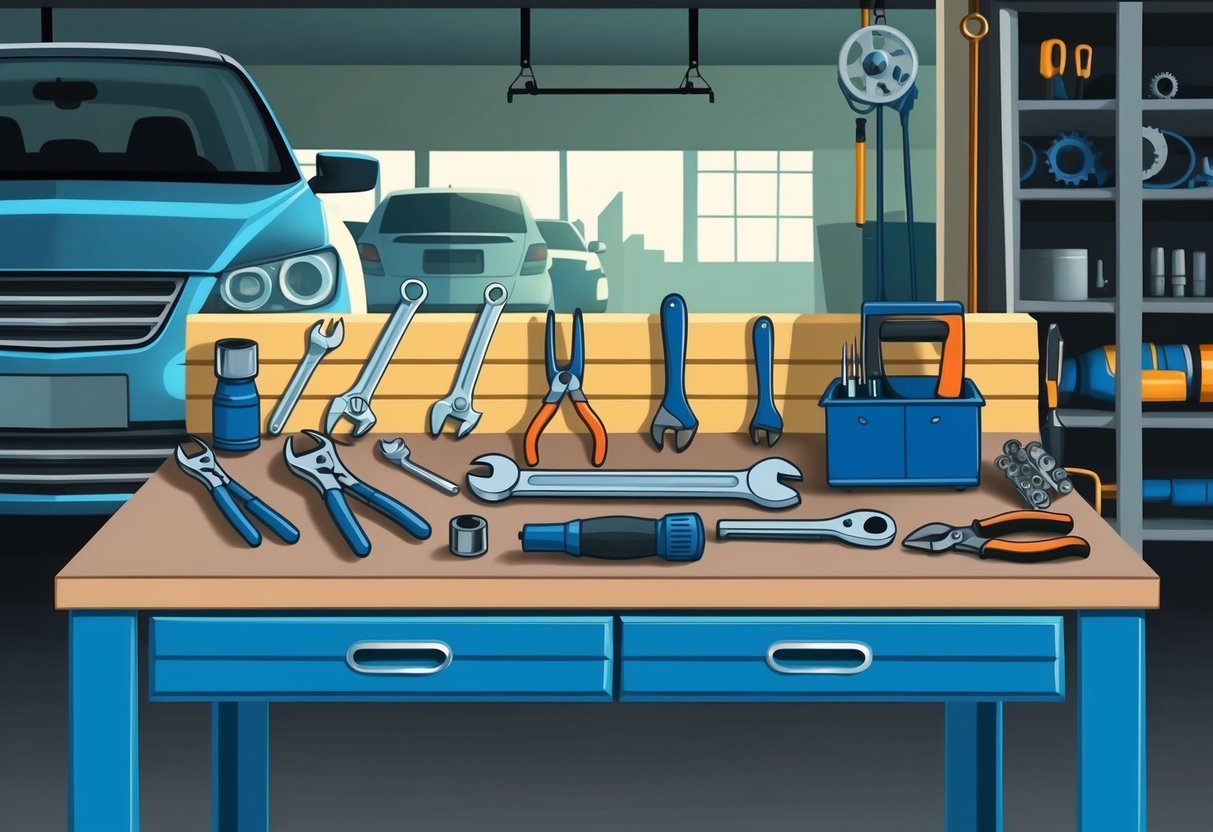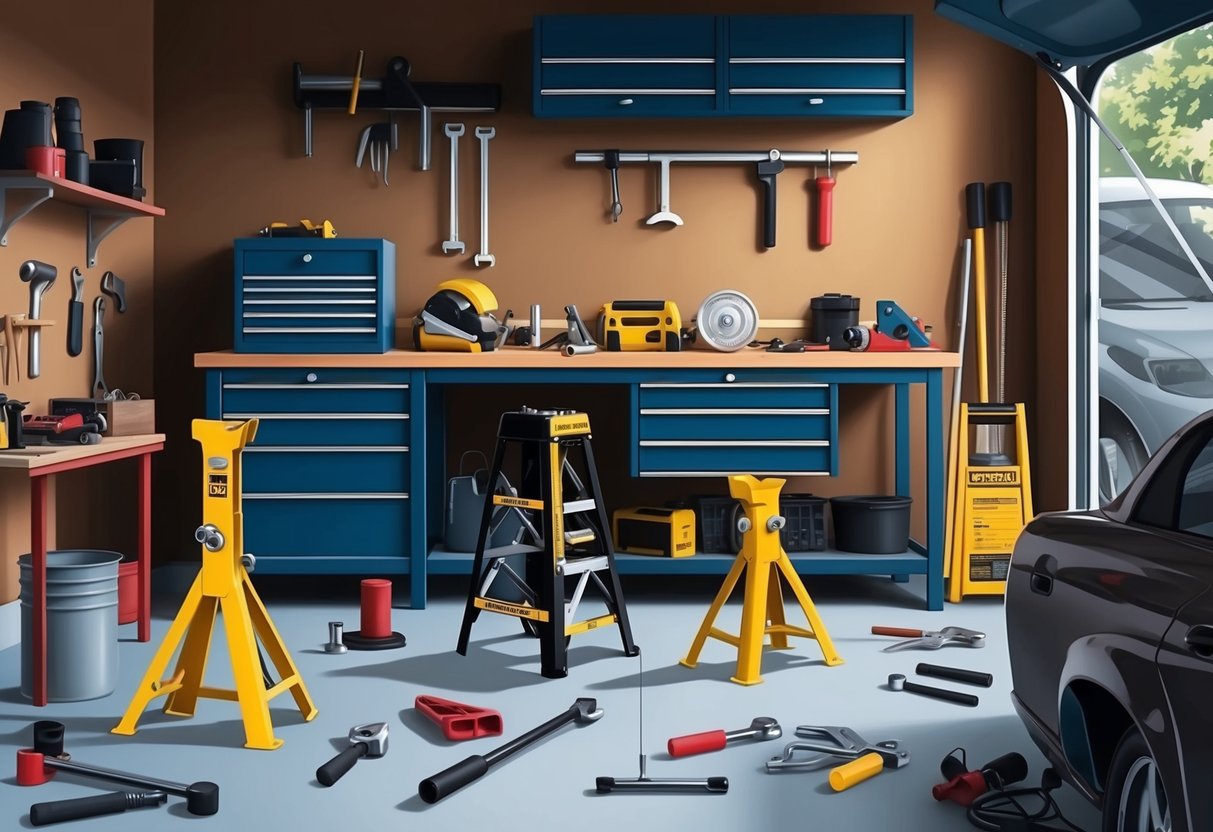
Essential Garage Lifting Equipment

Lifting equipment is fundamental for anyone working on cars at home. Safe, stable, and reliable support for a vehicle prevents accidents during repairs and inspection.
Car Jacks
A car jack allows users to lift a car off the ground for undercarriage work, tire changes, or general car maintenance. The most common types for home garages are hydraulic floor jacks and scissor jacks.
Hydraulic floor jacks provide more lifting power and stability than basic scissor jacks, and they require less manual effort to operate. Weight capacity is important—choose a jack rated to handle your vehicle’s weight.
Most passenger cars need at least a 2-ton jack, while trucks and SUVs may require a 3-ton or heavier option. Always place the jack on a flat, hard surface to avoid slipping or shifting.
Built-in safety valves in premium jacks can protect against overloading, which is essential for user safety.
Jack Stands
Jack stands support the vehicle after it has been lifted, keeping it securely suspended during repairs. Never rely solely on a jack to hold a vehicle—jacks can fail and shift under load.
Pairing a jack with a set of high-quality steel or aluminum jack stands is critical for any DIY mechanic. When selecting jack stands, consider their construction and weight rating.
A 2- to 3-ton set works well for most cars, while heavier vehicles require stands rated for higher weights. Always check that the stand’s locking mechanism clicks securely in place.
Position the stands under strong points such as the vehicle frame or manufacturer-recommended jack points for secure support during repairs.
Tool Storage and Organization
A well-organized garage prevents missing tools and makes car repairs more efficient. Good storage extends the lifespan of tools and reduces time spent searching for the right socket, wrench, or pliers.
Tool Chests and Cabinets
Tool chests and cabinets are foundational for any serious car enthusiast or beginner mechanic. These storage solutions range from compact, single-drawer chests to large, rolling cabinets with dozens of compartments.
Sturdy construction and secure locking mechanisms help protect expensive tools from theft or damage. Compartments and drawers are ideal for sorting wrenches, ratchets, sockets, and specialty tools by type and size.
Slide-out drawers provide quick access and help users spot missing items at a glance. Foam organizers or trays can further optimize organization and prevent tools from moving around.
Some models feature built-in electrical outlets or charging ports for cordless tools. Heavy duty casters on rolling cabinets make it easy to reconfigure the workspace as needed.
Investing in a quality tool chest or cabinet makes it easier to keep tools clean, sorted, and ready for any automotive task. For a full breakdown of storage options, families and garage owners can explore detailed lists such as those found on the Complete Mechanic Tool list.
Portable Toolboxes and Kits
Portable toolboxes and tool kits allow users to work on vehicles in the driveway, at a friend’s house, or on the road. Most toolbox designs prioritize portability, featuring sturdy handles and compact dimensions that fit easily in a car trunk or under a workbench.
Hard plastic or metal construction withstands drops and protects contents from moisture and dirt. These portable solutions often contain pre-selected assortments of common tools such as screwdrivers, pliers, sockets, and ratchets.
Built-in organizers keep each item in its designated space, minimizing clutter and making it easy to see when something is missing. Some tool kits offer removable trays for quick access during repairs.
A portable toolbox is essential for tackling emergency repairs or basic maintenance tasks outside the main garage. Beginners benefit from starting with a compact toolkit and expanding as their skills grow.
Online guides, including collections like the essential tools for car maintenance, offer advice on choosing the right blend of portability and capacity for a beginner’s needs.